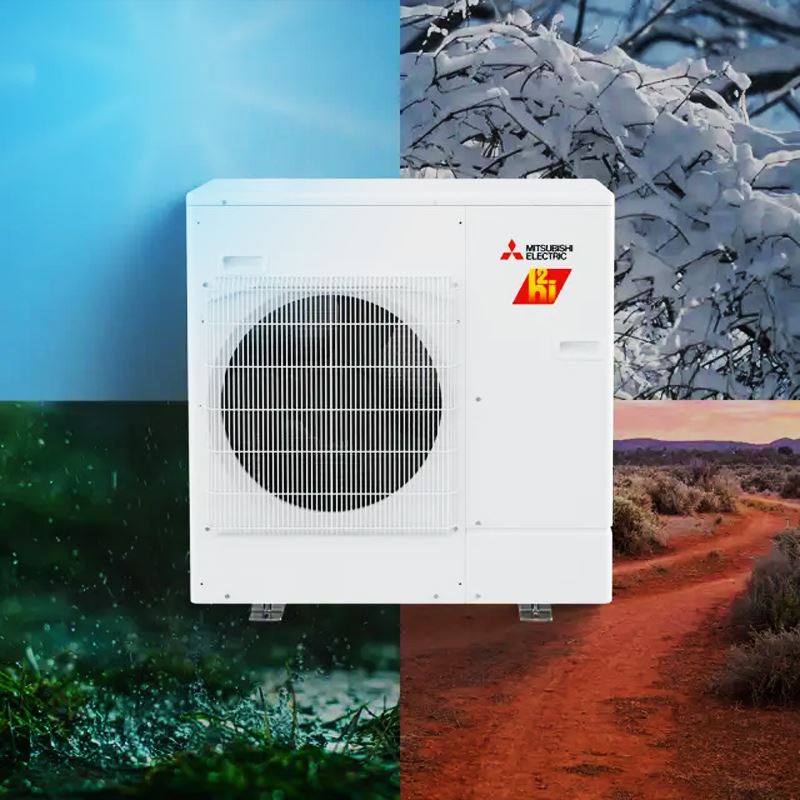

Understanding Heat Pumps: Your Guide to Efficient Home Comfort
A heat pump is a versatile and energy-efficient HVAC system designed to provide both heating and cooling by transferring heat between indoor and outdoor environments. Installed outside the home, a heat pump works alongside an indoor unit to ensure personalized comfort throughout the year, adjusting temperatures according to seasonal demands.
Originally gaining popularity in the 1970s, early heat pump models were primarily suited to milder climates. However, advancements in technology have revolutionized these systems, making them viable even in colder regions. Modern heat pumps, especially variable speed mini-split systems, offer reliable performance and sustainability, operating efficiently in various climates without emitting harmful emissions.
How Does a Heat Pump Work?
During the heating season, a heat pump absorbs heat from the outdoor air and transfers it indoors, using refrigerant to amplify and distribute warmth via the indoor coil. This process is not only efficient but also environmentally friendly, as it doesn't rely on fossil fuels. Conversely, in cooling mode, the heat pump removes heat from inside the home and releases it outdoors, providing efficient air conditioning.
Heat Pumps vs. Conventional Systems
Unlike traditional HVAC systems that burn fossil fuels, heat pumps utilize electricity for operation, contributing to cleaner indoor air quality and reducing greenhouse gas emissions. Additionally, heat pumps offer superior air filtration and can be installed in multiple zones within a home, offering flexibility in temperature control and comfort management.

Types of Heat Pump Systems
There are several types of heat pumps designed to suit different environments and needs:
- Air-Source Heat Pumps: Extract heat from the outdoor air to heat or cool indoor spaces.
- Water Source Heat Pumps: Utilize water from a nearby source for heating and cooling.
- Geothermal Heat Pumps: Tap into the stable temperature of the earth for efficient heating and cooling.
Components of a Heat Pump System Key components include the outdoor unit, indoor unit, compressor, condenser, expansion valve, and evaporator, each playing a crucial role in the heat exchange process that powers the system's heating and cooling capabilities.
Heat Pump Rebates and Tax Credits Governments and utility companies often provide incentives such as rebates and tax credits to promote the adoption of heat pump systems, recognizing their energy efficiency and environmental benefits. These financial incentives can significantly offset the initial investment in a heat pump, making it a cost-effective choice for homeowners.
Explore the benefits and versatility of heat pumps and discover how these innovative systems can enhance comfort while reducing your environmental footprint. Whether you're considering an upgrade or exploring options for new construction, a heat pump may be the ideal solution for your home's heating and cooling needs.
Inflation Reduction Act of 2022
The Inflation Reduction Act of 2022 is a significant piece of legislation in the United States aimed at addressing various economic challenges, particularly inflation. This act focuses on reducing the federal deficit, lowering prescription drug prices, and investing in clean energy to combat climate change. By implementing measures such as tax reforms and incentives for renewable energy, the act seeks to stimulate economic growth while curbing inflationary pressures. Additionally, it includes provisions to enhance healthcare affordability and access, making it a comprehensive approach to fostering economic stability and sustainability in the long term.
- Rebate
- Activation by state
Home Electrification and Appliance Rebates (HEAR)
Up to $8,000 upfront savings on heat pump installation.
The program is designed to assist low-to-moderate income (LMI) households by allocating $4.5 billion in grants to states and tribal governments for home energy improvements, including heat pump rebates. It offers a maximum cost offset of $14,000 per home, with specific caps for equipment types, such as $8,000 for heat pumps. Low-income households can receive a 100% rebate up to $8,000 for heat pump installations, while moderate-income households are eligible for a 50% rebate. The program, administered through State Energy Offices over ten years, requires ENERGY STAR® criteria for qualifying systems and varies by state in activation and rebate structure. Households above 150% of the area median income are not eligible, and funds cannot be used for the same measure within a home.




We Handle All Your Needs
Master Group Services

-
Top-Tier Customer Care
-
Get To Know Our Team
-
Deals Made Just For You


